-
Posts
1,738 -
Joined
-
Last visited
-
Days Won
53
Content Type
Profiles
Forums
Events
Posts posted by Syzygies
-
-
The Hasegawa and Asahi cutting boards will have cutting surfaces superior to any other I have used. Both for protecting the knives and actually cutting food more effectively.
Bamboo is hard on cutting edges; it's penalty work for my woodworking neighbor. Various synthetic boards chip on me; they aren't expecting my sharp knives. And a company that flogs pure titanium pans on Facebook also sells titanium cutting boards, which tipped me off that they have no idea what they're doing. Sure, titanium is softer than steel, but that's far from the whole picture. I'm loving my Hestan Titanium Chef's Pan which is actually a molecular titanium surface deposited on steel that is 4x stronger than steel, and slick, leaning in the "ceramic nonstick" direction but more durable. But pure titanium is a terrible idea for a pan. Luckily, my knowledge of cutting boards saved me from a mistake.The Japanese, of course, are expecting sharp knives.
I have long had a raw butcher block work surface in each kitchen, with an overhang to mount tools. I wash the surface by scraping with a bench knife into an (empty) steam table insert that also collects compost as I work. Since getting Japanese cutting boards, I only use the bare wood some of the time, like for prepping winter squash.
I am delinquent in bleaching my Japanese boards again, which does work. I lay down paper towels on the board surface in a utility sink, pour over a bleach mixture just strong enough to turn the paper towels back to pulp. But I'm not expecting Michelin inspectors any time soon (their loss!) and the stains don't bother me. Still, black? Clever.
600cm, wow. Cutting the Hasagawa boards (which you don't plan to do) would expose the wood core. Artists know this one: Cut both ends, make it look deliberate. 😀-
 1
1
-
-
HASEGAWA PRO-SOFT RUBBER WOOD CORE CUTTING BOARD FSR 19.7" X 13.8" X 0.8" HT
Traveling solo in Japan, I'd often sit at bars where I could watch chefs work. I learn, and I have always taught my math students to learn, by absorbing the mindsets of others I admire. Cooking isn't following lists of ingredients.
This is the class of board I always saw at the stations that relied on knife technique. I now have several sizes, duplicated when I had two kitchens. I consider these the canonical answer to your question, with the same certainty as "the JVR Vac-100 is far and away the best entry level chamber vacuum machine" (again I bought one for each kitchen, in each case replacing a far clunkier VacMaster).
They do stain. One can ignore this, or soak with a mixture of bleach and water.
My "Made in Japan" hall of fame also includes items one would expect to buy from China: the best cleaver and best wok I've ever owned, again duplicated while I had two kitchens. We saw the New York wok last night in constant use yesterday at California friends' Thanksgiving, for various veggie sides.
They ship worldwide:
Tojiro DP 3-Layer Chinese Cleaver 225mm (thin blade)Yamada Hammered Iron Round Bottom Wok (1.6mm Thickness)
Yamada Hammered Iron Flat Bottom Wok (1.6mm Thickness)-
 2
2
-
 1
1
-
-
1 hour ago, DennisLinkletter said:
My sister asked for a teak wine rack, and I love the results.
It's one of my favorite projects in 35 years of building furniture professionally.
Wow, I love your design. I'm very happy with my pragmatic design, using metal grids. And I usually cringe at the loss of bottle density in most "artistic" designs. Yours is great looking, celebrates wood, and doesn't give up bottle density.
With the right jig and a great router table (I have Jessem's best table) can one knock out your vertical elements? I'd cut V's so the boards mated with the eighth turn bigger sticks. Or do I have this wrong?-
 2
2
-
-
-
4 hours ago, EggheadRalph said:
@SyzygiesI recently bought a double bottom drip pan for my 32" and I just got it. I got it with the intent to use as a heat deflector and I see you do the same. Because of airflow, do you still use the splitter cooking low and slow when using the drip pan?
No, I just make an appropriate fire, no splitter. I do own two charcoal baskets, which facilitates saving extruded coconut fuel in place, swapping in other charcoal for e.g. a pizza or bread cook. I store the other basket on a "box store" terra cotta plant saucer.
-
 1
1
-
-
I'm episodic in my pasta. For a while I was only making Sicilian busiate by hand, or rolled pasta with my Marcato Otello (a definite upgrade on their Atlas, several of which I've broken over the years.
Laurie and I are just back from a food tour of Sicily with Rosetta Costantino, author of My Calabria. She and her husband were debating importing a powered pasta maker, and PastaBiz is having their annual die sale. So I returned yet again to see what I could figure out, making a Bigolaro easier to use.
When I worked (math professor), one administrative skill I demonstrated was looking at a list of requirements that couldn't possibly all be satisfied at once, and killing off a requirement.
The puzzle with a hand pasta extruder is this: They don't generate as much pressure as a powered machine. The Model B torchio that various of us own also accepts dies meant for the Lillo powered machine, but these Lillo dies allow less "flow" than the dies designed for a hand extruder. So one wants a dough wet enough to extrude by hand, but dry enough to not stick together and make a mess. This window is small, perhaps negative width.
Meanwhile, people love how extruded pasta dough is just flour and water. Um, there's our candidate requirement for deletion.
The obvious conclusion is that one needs to reformulate pasta dough to pass through a hand Bigolaro and Lillo dies. It's better to knead dough, but then it's too stiff? Um, add water. It's better to rest dough in the fridge for hours or overnight, but then cold dough is too stiff? Um, add water. If one is at all worried about "A1C" numbers for pre-diabetes, adding sourdough starter and resting dough overnight changes its carb profile for the better. You will worry about A1C if you live long enough, if something else doesn't kill you first, so it would be kind of stupid not to consider this. But you're off the hook! Just as sourdough bread dough that ages in the fridge for day(s) tastes spectacular, so does pasta dough handled this way. So extend your life and your quality of life by being a hedonist!
I'm doubling pressure using a custom handle, and I'm adding a small amount of psyllium hush to my dough, which stabilizes water that would otherwise make the dough sticky. I'm adding sourdough starter, and resting the dough overnight, good for both health and flavor. And I've never experienced such an easy time using a Bigolaro. I stare at the shapes I can now perfectly produce, "I did that?"-
 1
1
-
-
Go on hunch? Go on lunch?
Anything like this is the "art of seeing". You're gauging his ability to observe and react. General intelligence can lead to both great BBQ and excellent plumbing.
-
 1
1
-
-
13 hours ago, wrandyr said:
My main concern with having the dome probe close to the dome's inner surface is that I would expect it to respond rather slowly to changes in the interior air temperature, which would be an issue if you were using it as input for something like a fan controller.
I too have seen the "too long" effect but less the "too short" effect. I like would expect to guide experiments.
Perhaps my favorite BBQ book is Legends of Texas Barbecue by Robb Walsh, although I follow none of its recipes. The stories bring home the attitude and diversity of technique, discovered experimentally, of various cooks. No one to watch the fire while you sleep? Let it die, in a brick-lined wood oven that holds heat well, and build it again in the morning. The meat that comes out is famous.
Aaron Franklin of Franklin Barbecue in Austin, Texas generally cooks everything at 275 F. Why? He builds these cookers from 1,000 gallon recycled propane tanks, and he has a restaurant to run. As it happens, I've found 275 F to be a far better universal choice than the 225 F I first learned, though one can learn to work with either.
This discussion reminds me most of Neopolitan Pizza discussions. I know an Italian cook who has traveled Italy with an infrared shooter thermometer, and the exalted temperatures people claim to use are relative to where one takes the reading. It's a temptation to latch on to a mythical high temperature as the "proof" one is a great pizza cook, rather than learning what reading works best with one's dough, technique, and cooker.
I love that Chris Young's Combustion Engine is a simple dial. I don't expect consistency in someone else's shower, and I expect the numbers I'll use are again just readings, relative to this specific feedback loop. I don't fear that the probe will be "too short" as long as its tip reaches dome air. I do fear that this discussion will spook Chris Young into making us a probe that's "too long", though as you imply the workaround is to be careful how one uses the upper grill.
In any case I do intend to take one for the team and buy this setup, after they answer my email.-
 1
1
-
-
My routine setup for using pit probes through the Tel-Tru dome hole is to set a "stop" on the probe using an alligator clip. (I now use those things hippies used to use to smoke joints, to smoke meats.)
This has the advantage of never exposing the probe cable to high temperatures, easing stabilizing the KK for making bread. I'm familiar with the standard advice that a pit probe should be near the meat, but that advice is cooker-agnostic. In my experience there can be a large discrepancy at first between dome temp and grill temp, but they converge as the KK stabilizes because the KK is so well insulated. Limiting the dome temp is a better way to keep the fire from overshooting; in a way the dome temp is the actual temperature, and asking the KK to maintain a flat pit temp near the grill is asking the fire to supply an initial surge so the dome temp can swing high. Of course there's an overshoot risk.
Controlling the dome temp is simply a different flight path for getting to your destination, and one I'm happy with. For low & slow barbecue, the meat stays colder longer, absorbing more of the clean smoke from my "smoke pot" (my other hippy to meat transition) before we reach cruising altitude.
Dave's not here! (I think he's in back, at the cooker.)
So I'd be very happy with a dome controller; that's what I already do. And I'm rather unhappy with my newest controller from that legacy company, so I'm ready to move on. Based on that experience, my biggest concern is how well the MeatNet™ Cloud works. My $30 Leviton Smart Switch in the garage updates its app instantly when I use the physical switch, so we know IT competence isn't a "class" thing. My legacy controller (cloud or bluetooth) will blithely lie that 20 minute old data is current, with no visual indication that my phone is failing to update. I so wish there were hardware episodes of Squid Game for AI to watch. I'd be happy to be the human on the ground, filming a YouTube video where sledge hammer meets product.
Anyhow, I've seen little difference between having the tip of the probe barely protrude and having it dangle well inside. One gets predictable cooks either way. Numbers are arbitrary (and this is coming from a mathematician). -
Apollo 12 needed to land within walking distance of the Surveyor 3 robotic probe. The moon's lumpy gravity proved a challenge for Apollo 11's landing, so NASA introduced a feedback loop, and nearly landed on top of the Surveyor.
The poster child for this cooking debate would be salt. Many people are fiercely proud of portioning salt by eye. Cooking is part theatre, and making a show of pinching salt as a restaurant chef would do is good theatre. We can taste the difference for each 0.1% step of salt by meat or fish weight, and we've never met anyone who can eye salt to this accuracy, so we measure. We like to land within walking distance.A KK with no controller is astonishingly stable, but needs periodic adjustments. Fixed settings determine the geometry of the airflow, and oxygen determines heat production, but this isn't what an engineer calls a stable equilibrium. Open the lid to tend to the meat, and with greater airflow the fire gets hotter. Hotter air generates a greater pressure differential through the fixed geometry of the airflow, which increases the airflow, which sustains a hotter fire. Even if one never opens the lid, nighttime changes in outdoor temperature, and variations in the evolution of the fire, can similarly change the airflow for a fixed opening geometry. This is a mild effect, but every 15 degrees affects the cook. One either embraces these variations as the romance of barbecue, or periodically steers.
-
2 hours ago, Cheesehead_Griller said:
In the end, I decided to sell my Fireboard 2 Pro, Pit Viper Fan, and all of there electronic cooking equipment.
I'm almost there, but I like to sleep through overnight cooks. One can nail 225 F manually "most of the time" and sleep through the night, but "most of the time" doesn't cut it when 50 people are depending on the result, or the brisket cost $120.
I like to measure my pit temp by sticking my probe through the TelTru dome thermometer hole. This is contrary to most advice, but it doesn't matter as long as one is consistent and understands one's cooks. The dome runs hotter till the KK stabilizes, so this yields a more gentle approach to cruising altitude. And I can set 450 F for bread without heat damage to the probe wire.So yes, my lesson has been to not overreach, just use a feedback loop without embarrassment to set my pit temp.
-
 1
1
-
-
On 1/12/2025 at 10:21 AM, DennisLinkletter said:
Doug from the Naked Whiz and a very early supporter of Komodo Kamado, does the best BBQ product reviews online.
I always suggest starting there.
https://nakedwhiz.com/productreviews/ultraq/ultraq-1.htm#featuresQuoteNow that a few firmware levels have been released and the few problems that we experienced have been fixed, the UltraQ is a first rate temperature controller.
I really wish I'd never bought my UltraQ. I've been a BBQ Guru fan since they were the best option, which was apparently long ago. That mechanical dial thingy, then two DigiQs, and now (for some reason, the DigiQs both work) the UltraQ.
I love how I can mount the UltraQ on my garage wall, and see the pit temp from far away.
One would think I bought the UltraQ so my phone would tell me the pit temp from far away? Even after deleting ShareMyCook and standing right next to the UtraQ, the phone will show stale data while lying about the update time. This is inexcusably stupid. It's not rocket science to handle messages so that one never falsely depends on stale data. I want a warning if my actual data is more than a minute old, not a lie. I should only see that warning when I'm out of bluetooth range.
For those of us good at programming computers, it comes as a surprise how well or badly such apps work. My ceiling fan app is unpredictable, from an upscale company. I always thought of Leviton as generic box store stuff, but their smart switches are bomb-proof. One can stand in the garage and manually flip a switch while my wife watches the Leviton phone app in the house, and the new state shows instantly. From this perspective, whomever BBQ Guru hired are the dumb kids in the class.
My various AI consoles tell me people think more highly of FireBoard products.
The kicker for me was intermittent connectivity for my meat probe, in any UltraQ meat port. AI tells me this could be the probe (out of warranty) or the UltraQ (still under warranty). I just don't have time for this, I'd rather pay top dollar for something that just works. Wireless probes? Huh.
For now, given that I'm this close to offering my UltraQ here for $25, I decided that for $25 I'd buy it as a pit temp monitor and fan controller with a nice display. So I'm keeping it, but one further failure and I trash it, move on.-
 1
1
-
-
Long time 23" Ultimate owner. I've experimented with many approaches to "radiant heat". I wouldn't double the basket splitter.
I'm a big fan of the 23" ULTIMATE DOUBLE BOTTOM DRIP PAN. It makes a great heat deflector, and an easy to clean drip pan when lined with foil. (Some people use the drippings for gravy, where the double bottom helps prevent scorching.)
I use it as a heat deflector for pizza. Using any ceramic cooker as a pizza oven, one needs to confront the "heat from the bottom" effect. Wood-fired dome pizza ovens don't work this way. The best deflector helps here.
Long ago, I'd get several years at a time out of a giant unglazed plant saucer (no lead risk) lined with foil. Again, leave several inches around the outside.
The real art to radiant heat is to time the fire's arc. Cook on the return from "low earth orbit" when the fire is waning but the dome remembers.-
 3
3
-
-
Custom manufacturing has turned being a DIY "maker" on its head. I've personally used SendCutSend, Ponoko, Western Dovetail. My master woodworker neighbor hasn't made a drawer for clients in years; why do! My Venetian Bigolaro came with a handle that couldn't take the stresses of more restrictive pasta dies, so I made my own handle. Same for stainless steel spacers for my Orange-X juicer, or to better seal the interface between our kitchen faucet and sink...
My 23" basket splitter is just a couple pieces of flat metal that fit together same logic as some cardboard boxes. I could upload a picture. Me, I'd mock one up in plywood, just don't light it. Be aware that most metals don't belong in a food cooker, so don't improvise: Galvanized metal in particular offgases toxins.
There are always metal working shops in town, too. Get a quote. They could be half the price of buying a pizza steel from Baking Steel, at the expense of hours of prep. They were twice the price for my bigolaro handle.
Our KK community is experimental, and Dennis has perfected various community good ideas once they get traction. -
On 5/7/2025 at 4:09 PM, Paul said:
Those are the fatest ribs I've ever seen!! Must have been the cut right next to the shoulder?!
One can butcher or request "country-style ribs". They are indeed cut from the blade end of the pork loin, near the shoulder, often with generous meat.
I used to cut these myself, trial and error after buying bone-in pork loin roasts. I'd always put the bones back in, and eventually it dawned on me... -
-
A few decades ago I was at a math conference in College Station, Texas, and lead various forays into the town's ok BBQ. On yet another wine buying stop for the courtyard parties at our hotel, I asked if I'd found the best place.
I don't
It's tough being a New Yorker, while traveling. Paragraphs flit by in one's mind in the pauses between words, elsewhere. It's polite to appear to be paying attention, but that requires focus.
eat barbecue
Oh gawd! I'm asking the one vegetarian outside Austin! How do I get out of this conversation gracefully?
round here!
Well then! He sent me to Elgin, Texas. They're known for their hot links, sold in supermarkets across the state, but there were several places selling extraordinary brisket. My own best efforts would be #2, #3, #4 for me, but they were #1. I brought back more on the plane to NYC (causing some commotion) to reheat at the kind of wine tasting I now avoid. They started ordering delivery.
-
 1
1
-
 3
3
-
-
How low does your (convection?) oven go? We can all imagine the obvious worst case scenario here, but if you don't bump the knob your house shouldn't burn down.
The obvious choice (safer but more work): your KK is an oven. As it cools after a regular cook, use it to dry pellets? I have a KK double bottom drip pan which I use all the time as a heat deflector; on the main rack filled with pellets, once the KK cooled far enough, would be a great drying environment.
-
 1
1
-
-
18 hours ago, wrandyr said:
That's very interesting. I found that a stone by itself doesn't get hot enough (top burnt/crust under done), and a baking steel gets too hot (crust burns before the top is done), but if I put the stone right on top of the steel, it's about right. I then manage the fire for the dome temp I want, which has been around 600°F lately.
Huh. I don't doubt your experience, but it's quite different from mine. I'd love to meet you halfway. What KK? What stone? What dome temperature? How long do you let the fire settle, stone heat?
I do have a baking steel, but it's dedicated to tortillas; I don't want to mess with its seasoning.
-
I'm a fan of the gas burner assembly. I get the impression that there aren't many of us, but it has its uses.
As a general principle, one can take the approach of learning how to use a KK with minimal accessories, and then buying later to meet recognized needs. How one imagines the KK will work rarely corresponds to how one observes that it actually works. It's hard to identify needs in advance, before getting experience.
That said, I consider the pizza stone, and the double bottom drip pan, essential equipment.
I use the gas burner assembly to get a hot fire going more quickly, for example for pizza. The issue is that one is lighting charcoal from underneath, so the fire wants to burn all at once then go out. This can be mitigated by controlling airflow, and by using large pieces of lump, such as one can buy from Fogo.
As Dennis notes, one could turn off the gas but leave the gas burner inserted. I swap it for the regular door. It just feels right to get propane equipment out of the way, though I recognize that there's no actual safety issue here.
My approach to pizza is to catch the KK on a downward arc, where the fire is mostly spent but the walls are still radiating a good deal of heat. I don't let the fire go into low earth orbit, because the pizza stone will get too hot, so I control airflow to limit the maximum temperature. On the other hand, the pizza stone needs to get hot enough; this is a balancing act. This is where I consider the double bottom drip pan to be essential; it's the best heat deflector for shielding the pizza stone from the fire below. In a conventional wood-fired pizza oven, the fire is not below. Using a KK, this is a key difference that requires attention. One doesn't want a burnt crust before the top is done.
With this approach, I don't care that the fire has been lit from below and wants to burn all at once. My goal is to burn it all at once, within my imposed upper temperature limit.
-
We don't eat hunks of meat as often as we used to; our KK sees most use for chicken, pizza, Focaccia di Recco, bread. I do quick grilling (salsa veggies, taco meat) over a Solo Stove fire pit, the air fryer of the gods.
We nevertheless use lots of meat-as-ingredient, and what meat isn't better with smoke? Then there's the Maillard reaction, very special in a KK.
Thinning the herd in the chest freezer... The pork butt will become carnitas or tamales filling, the ribs will become a pasta sauce from Rosetta Costantino's My Calabria (we just got back from her food tour), and the brisket will become braised beef for Dan Dan noodles from Robert Delf's The Good Food of Szechuan.
-
 5
5
-
-
Beautiful!
Back in the shallow end of the swimming pool, I'm also fond of guerrilla woodworking. At our daughter's previous house in Salem, Oregon, working outside in her carport next to pouring rain with minimal tools, watching the wood warp in real time as I worked. I rejected dado cut joints in favor of explicit shelf supports I could clamp the shelves onto, taking out cupping as I screwed them in. Back went on last. Serviceable, and they made the move to her new house in Arizona.
-
 5
5
-
-
We love our Vermicular Musui Kamado, and use it frequently. Also, as part of the cohort that can afford a Komodo Kamado, we did not blink at buying a new Vermicular Kamado (base) after our original touch display failed after four years.
They may be Japanese, but they're not Toyota. Anyone who is on the fence over price needs to accept that the $340 (USD) Kamado base is potentially a purchase every three years. If someone's reaction is "screw them!" I understand.
While I can be dispassionate enough to repurchase the base, I'm also fairly pissed off that they didn't at least volunteer a technical description of what is typically wrong, and what they'd do under warranty. Although, my own experience is that they replace rather than repair. While I appreciated the new unit, this is how we're destroying the planet.
-
 1
1
-
-
I asked my wife, who belongs to a Greek Orthodox church. Her immediate answer: They overcook it.
My advice would be heretical: Sous vide for a long time at a rather rare target temperature, then grill on the KK to get a nice exterior.
That's my go-to for any meat better served rare than "low and slow" trad BBQ.
-
 1
1
-



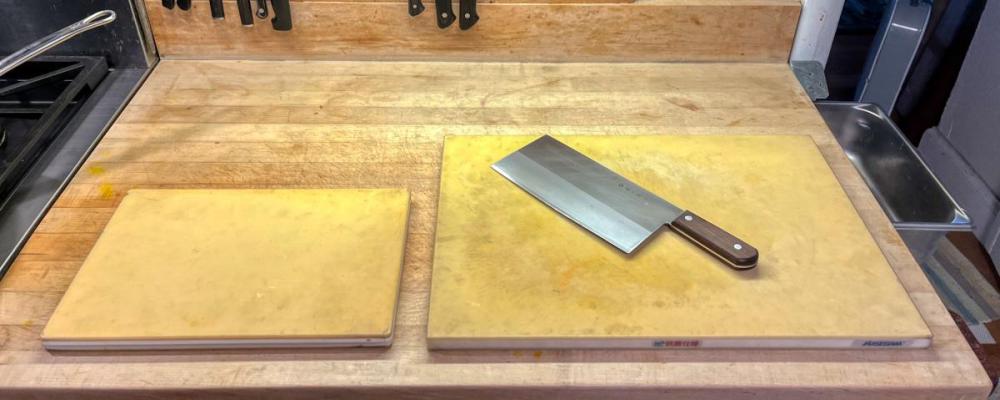
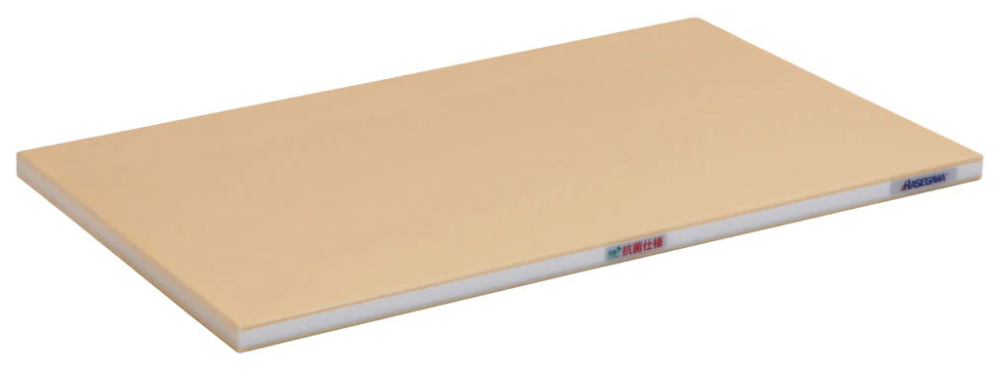

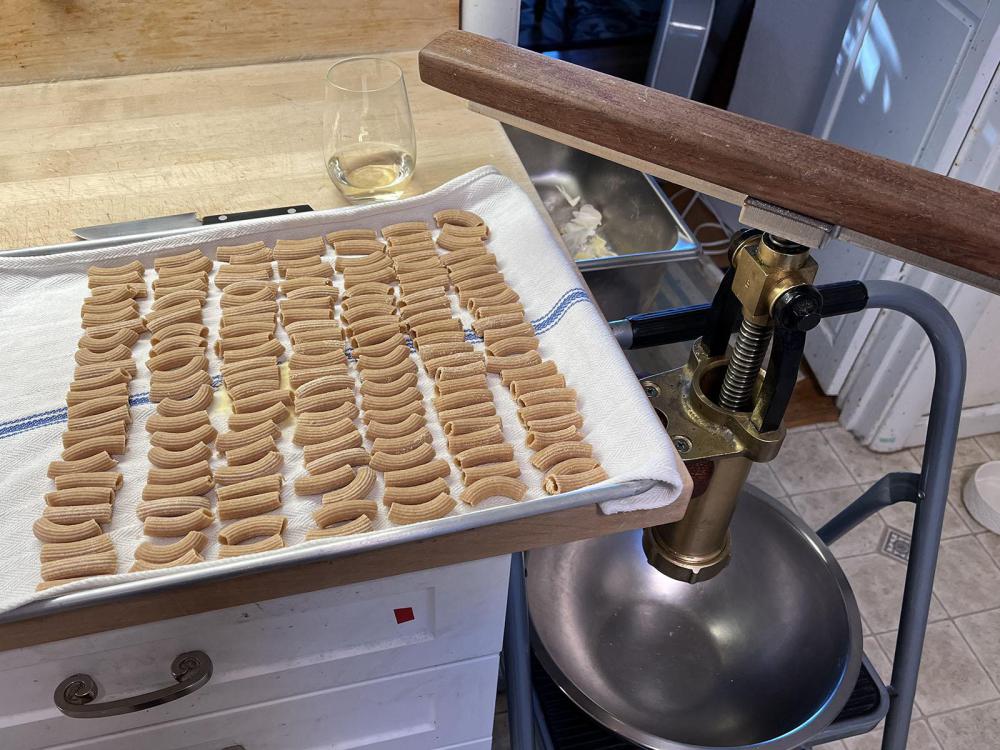

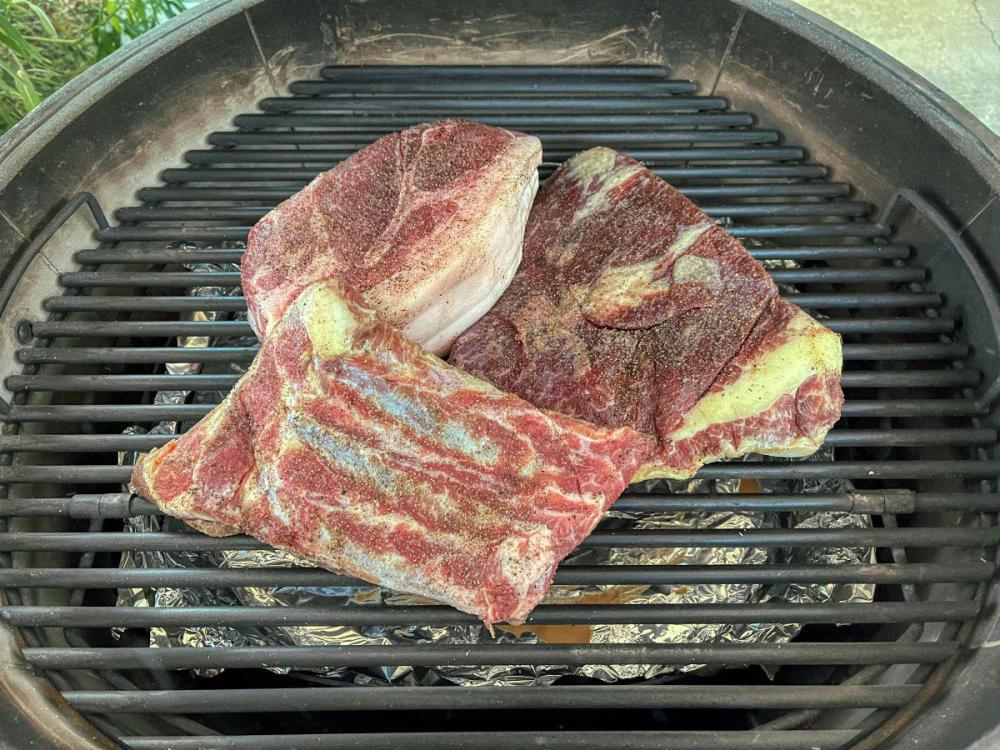

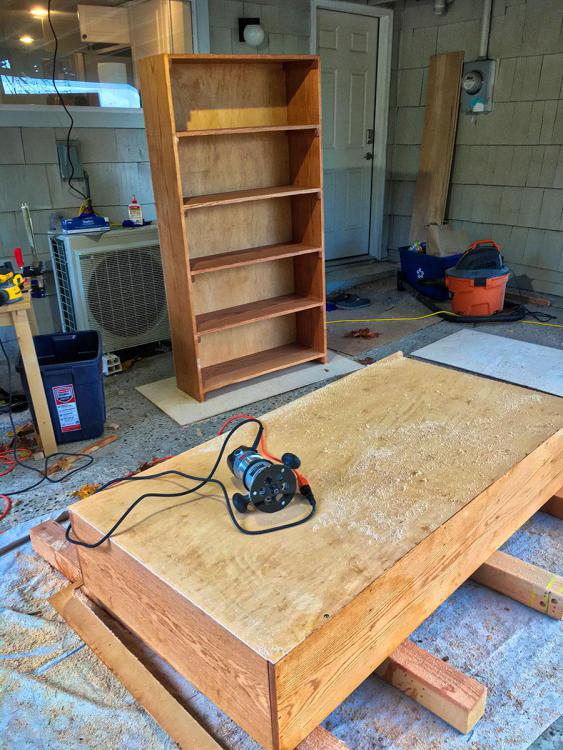
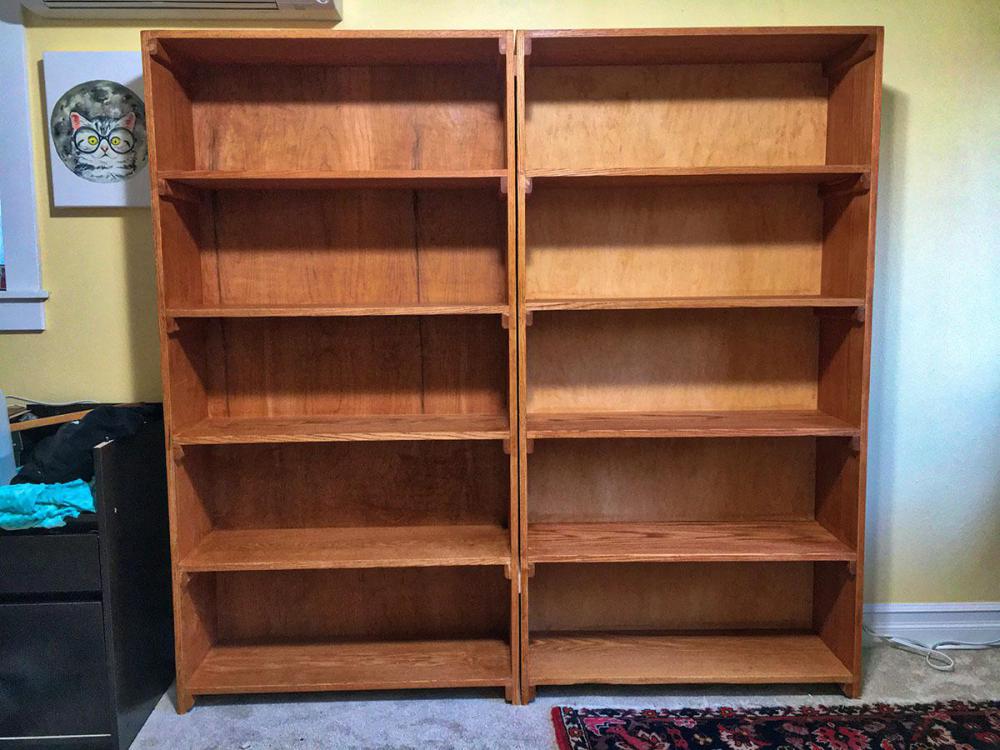
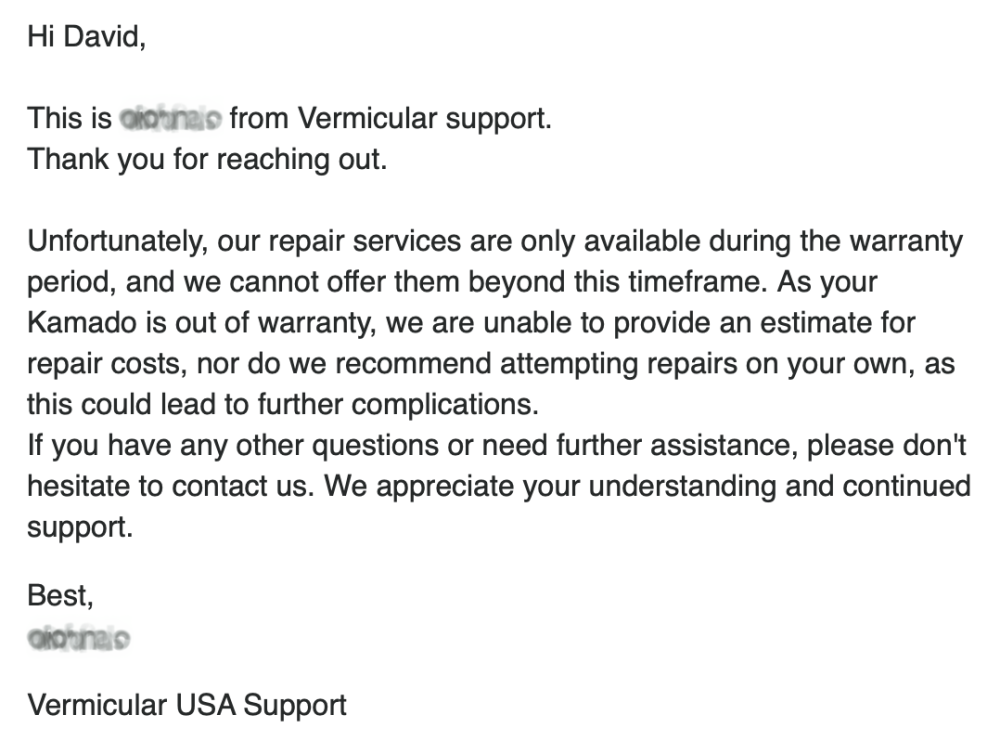
Best Cutting Boards
in Relevant Product Reviews
Posted
Olivewood End Grain Carving Board (Arte Legno, Italy)
I do love a good end grain cutting board. Shown is my favorite; I used a UK source. The end grain testimonials here happened to coincide with my pulling out this board to bone some chicken thighs that I had cooked sous vide in a Chettinad pepper masala, best chicken curry of my life.
My smaller "utility" Hasegawa board is shown for comparison. For any detailed knife work such as mincing, I always reach for one of my Hasegawa boards. I have a great capacity for creative delusion, balanced by high entropy, so I find what I do after I stop thinking to be informative.
On the other hand, food is part romance. For anyone who hasn't admired the attentive composure of Japanese chefs working in front of you on a Hasegawa class board, the end grain wood is more romantic. And it rarely makes sense to have one type of tool, though my cast iron, carbon steel, enameled cast iron, and various clay pots are all talking behind my back as I go all in on Hestan NanoBond pans for utility use. Many reviews haven't made the effort to learn best use of this molecular titanium surface, yielding a metal pan that thinks it's ceramic nonstick. If with careful technique I can glide a fried egg across its surface like an air hockey table, and I don't want teflon nonstick pans for health reasons, then any other pan becomes a speciality player.
I've had other kinds of laminated boards chip on me; my knives are sharper than they imagined. I don't see a health hazard with my Hasegawa boards. And I bought their sanding block, tried it once, and haven't thought about it since. I will simply buy these boards again when the time comes; they are that important to me.